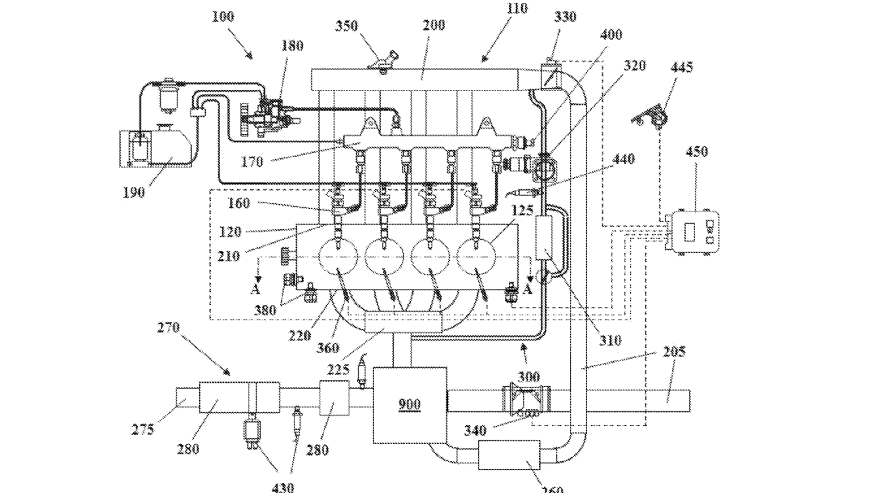General Motors isn’t averse to making advancements in engine technology. That was made abundantly clear after reports surfaced that the company has filed a patent for a new two-stage turbocharger design that could potentially eliminate the shortcomings of the current version.
GM Inside News had the scoop, publishing a document that reveals a new design that separates the low-pressure and high-pressure turbines, allowing them to work independently of each other. This is opposed to the current setup where both turbines operate simultaneously at low to mid engine speeds with the low-pressure turbine working exclusively at high engine speeds. The result is that both turbines aren’t isolated from one another and because of that, low-end performance isn’t maximized to its fullest potential.
GM’s new two-stage turbocharger design evolves from the current design by connecting the high-pressure turbo to the exhaust manifold through a high-pressure inlet duct while the low-pressure turbo is now connected to the high-pressure turbo through a low-pressure inlet duct, which is then linked to a connecting channel. The design also features an ECU-controlled actuator on the exhaust manifold that can isolate both the low- and high-pressure turbines by opening the inlet duct and closing off the connecting channel or vice versa. According to the company, this new design provides more efficiency for the two turbines by optimizing them to fulfil their specific functions, thus helping increase the engine’s performance capabilities while also reducing lag.
At this point, there’s no word on how GM plans to use the design for production use. The patent did reveal that it was mated to a four-cylinder engine so it’s conceivable to think that we’re going to see this new technology put into use with the automaker’s roster of four-cylinder engines. When that’ll be is the question, but considering the seeming importance of this new design for the company moving forward, we might see it sooner than later, with the company’s lineup of premium models getting first dibs.
Continue after the jump to read the full story.
Why it matters
When you think about where the auto industry is today, it’s perfectly understandable for a company as big as General Motors to continuously work on improving its own technology. That comes with the territory of being one of the biggest automakers in the world. Even things that are as technical as low-pressure and high-pressure turbines must be addressed in the name of improvement.
This new patent filed by the General back in May 19, 2016 shows how dedicated GM is to even the slightest of details. It’s nice to see the company take this approach because it shows that it is continuously working to give its customers the best possible products. Sure, the new design was only described in broad strokes and there’s likely more to it than what the leaked document showed. But this shows a careful understanding, at least in GM’s part, that even though the current design is still being used, work on an improved version is being treated with the importance it deserves.
At the end of the day, GM can only sell cars that it can offer, and as it embraces its status as one of the biggest car makers in the world, it’s also aware that such a status comes with its own set of responsibilities. This is one of them and the General is doing right by its customers in pursuing improvements that could result in more efficient cars down the road.

